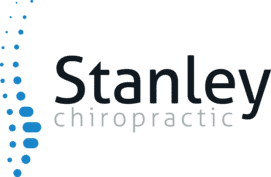Is Massage Good For Whiplash Injury?

Many physical therapists and doctors who specialize in treating whiplash injuries refer to patients for regular massage therapy as a safe and effective way to ease their symptoms. Also known as Cervical Acceleration/Deceleration Syndrome, whiplash injury is most commonly characterized by symptoms, such as posterior neck pain, shoulder pain, headaches, and migraines.
Talking with a qualified and experienced therapist is essential when planning for a massage. A massage therapist can help patients with whiplash by addressing sore and tensed muscles that are the underlying cause of deviation of the posture and troublesome symptoms. Not only do they help to ease pain, reduce inflammation, and prevent long-term complications, but also raise awareness and educate patients on how to make appropriate changes to their posture for a speedy recovery.
Why Is A Massage God For Whiplash Therapy?
When addressing whiplash injury, it is essential that a therapist understands how the body’s anterior muscles work and what possible deviation they can make following the injury.
Massage therapy is one of the most effective treatments for breaking up trigger points, increasing mobility, and realigning scar tissue associated with Whiplash. Your therapist will use a massage method called cross-fiber friction to decrease scar tissue. It works counter to the direction of the muscle and helps loosen adhesions and tight muscles. The therapist may also massage areas neighboring the primary injury area to relieve muscle tension, reduce inflammation, and restore full range of motion.
Typical therapy is 8 -12 sessions – once a week. While yoga, physical therapy, and acupressure are other alternatives, these are less effective than massage and don’t work directly on adhesions. The three specific massage approaches that have been known to relieve muscle tension and ease symptoms of Whiplash include the following:
- Static Compression – This massage technique prevents muscular dysfunctions and reduces the chances of complications that could otherwise last for months or years after the initial trauma.
- Deep Tissue Massage – This technique can help ease pain and inflammation by liberating muscle trigger points, scar tissue, and deep fascia adhesions.
- Myofascial Release – This technique is used to mobilize restricted neck muscles to restore fluidity and movement.
The most important thing to realize is that muscle aches and knots will go on for years without any treatment. The knots and kinks set in, and you may never be quite pain-free. Massage therapy is one of the best and most effective ways to restore your tensed muscles to optimal function.
The practical massage approach accomplishes two major goals. First, eliminate pain and inflammation, and second, improve function and mobility. If the therapist is experienced and uses the correct massage techniques – knowing the origin of pain – then you will feel quick and lasting improvement. Following multiple massage sessions, you will experience reduced inflammation and pain-free movement.
However, you should talk to your doctor first, as in some cases (such as torn ligament, herniated disc, or displaced vertebrae), massage therapy may exacerbate the condition.
